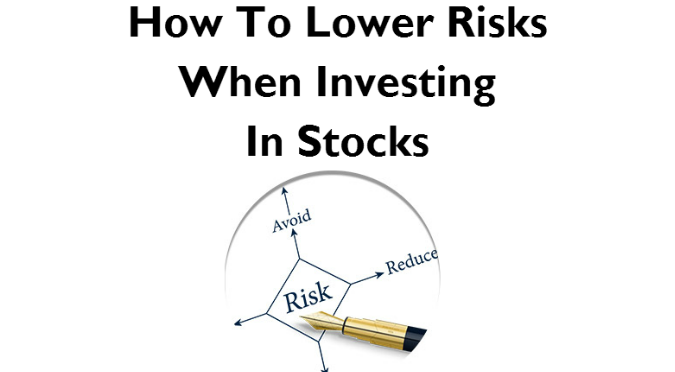
Stock investing is not for everybody. But with a little homework and planning it is possible to select a stock in a manner that reduces your risk and puts you in a position to benefit when its price rises.
There is a great deal of information available on publicly traded companies that can help you decide if its stock is worth buying. But it is a challenge to sift through all the data to arrive at the figures that tell you the real story about its performance and its prospects.
If you follow the four stages outlined below you should be in a position to make an informed choice:
Stage #1
When you want to choose a stock to invest in, it is best to start off with a list of 10 – 20 different companies. You can then use a process of elimination till you have arrived at your choice.
To make your initial list you may want to consider several factors for each company, the most important of which are long-term debt, the company’s ability to service the debt and the value of its current assets compared to its current liabilities.
Your checklist may look like this:
- Market value of the company to exceed $500 million
- Market price of the company’s share divided by its earning should be less than 15
- Market value of the company’s share divided by its book value should be less than 1.5
- Proportion of current assets divided by its current liabilities should be more than 1.5
- Long-term debt of the company divided by its net worth should be less than 0.5
- For the last five years, the company should have averaged at least an 8% return on its shareholders funds
- Net income should have grown by an average of at least 5% over the last five years
- Revenues over the last 10 years should have grown by an average of at least 5%
- Earnings per share over the last 10 years should have grown by an average of at least 5%
- Amount available to meet the interest liabilities of the company should be at least 1.5 to 2 times the interest amount
It may be difficult to find many companies that meet all these conditions. But this will give you a starting point.
As a general rule, you can add companies that do not meet some items on the above checklist but it is better not to compromise on factors such as long-term debt and the company’s ability to pay interest.
Stage #2
Now choose some companies from the list that stand out for their performance. These should be subjected to greater research.
An approach that you can follow to reduce your risk is to focus on what the company owes and its ability to meet its commitments.
Has it taken on too much debt in the recent past? Often a company that is performing extremely well gets emboldened by its success and goes into expansion mode at the wrong time or diversifies into an unrelated field.
If a company is going down this path and has taken on a great amount of debt to fund its expansion plans it may be advisable to avoid investing in its shares.
You should also see how has the company has performed over the last 10 years. Does it have a track record of sustained growth and profit?
Once you have established that the company is a relatively risk-free investment, you should analyse its ability to earn profits in the future. Study the company’s financials to determine its free cash flow and earnings per share over the years.
Usually, these two metrics should move in tandem. If they do not, you need to investigate the reasons.
You also need to study the company’s performance vis-à-vis its industry peers. If your target company is a laggard it should throw up a red signal for you.
Stage #3
By now you should have identified two or three companies that seem to have good prospects. Do your anticipated returns from these companies exceed what you can expect to earn from other options?
If, for instance, you anticipate that an exchange traded fund (ETF) would give you better returns than the stock you have chosen, it makes no sense to invest in that stock.
Alternately, you may have some other investment opportunity, say another stock that promises better returns.
If the stock that you have selected based on your analysis passes these tests, you are just one step away from finalizing your choice.
Stage #4
Any profitable company that you plan to invest in needs to pass this crucial test. It should have a ‘moat’ around it that ensures continuity of its profits into the future.
The term ‘moat’ has been coined by Warren Buffet, the legendary investor. It is based on the deep, wide ditch filled with water, surrounding a medieval castle.
The purpose of this was to prevent enemies from gaining access to the fort or town which it encircled.
Similarly, in an investment context, a company’s moat may take the form of:
- A strong brand – Think about a chipmaker like Intel or a fast food chain like KFC. It is difficult for another company to build a brand of similar stature.
If the business that you are planning to invest in has a strong brand, it would be difficult for a competitor to challenge it.
Your investment in such a company’s shares would have a better chance of giving you the returns that you expect.
- Exclusive rights – Companies holding patents enjoy a great advantage as rivals are prevented by law from replicating their technology.
In a famous case CEO Martin Shkreli of Turing Pharmaceuticals acquired the rights to sell Daraprim, the only US-approved treatment for toxoplasmosis, a condition afflicting unborn children, and overnight raised the price from USD 13.50 per pill to USD 750.
While such an increase is clearly unethical, it does illustrate the economic benefits of holding a patent and is a major reason for the profitability of pharmaceutical companies.
- Economies of scale – A company with large capacities has a number of advantages. Fixed costs assume less importance as it manufactures and sells ever increasing quantities of its product. It can also drive down its costs as it buys raw materials in bulk.
Proctor & Gamble owns more than 20 billion-dollar brands and another 20 half-billion-dollar brands. A company of this size enjoys massive economies of scale and a very wide moat.
- Network effect – Once a product or service gains traction it is very difficult to dislodge it. A competitor would need to invest vast amounts of capital to even try to emulate Facebook today.
The wildly successful social media platform has in excess of 1.5 billion active monthly users. Most of them would be reluctant to switch to another platform as all their contacts are already on Facebook.
The investment that you have zeroed in on needs to pass this final test of having a moat that will protect it from its rivals. If you are satisfied that it meets this criterion, you can go ahead and invest!




